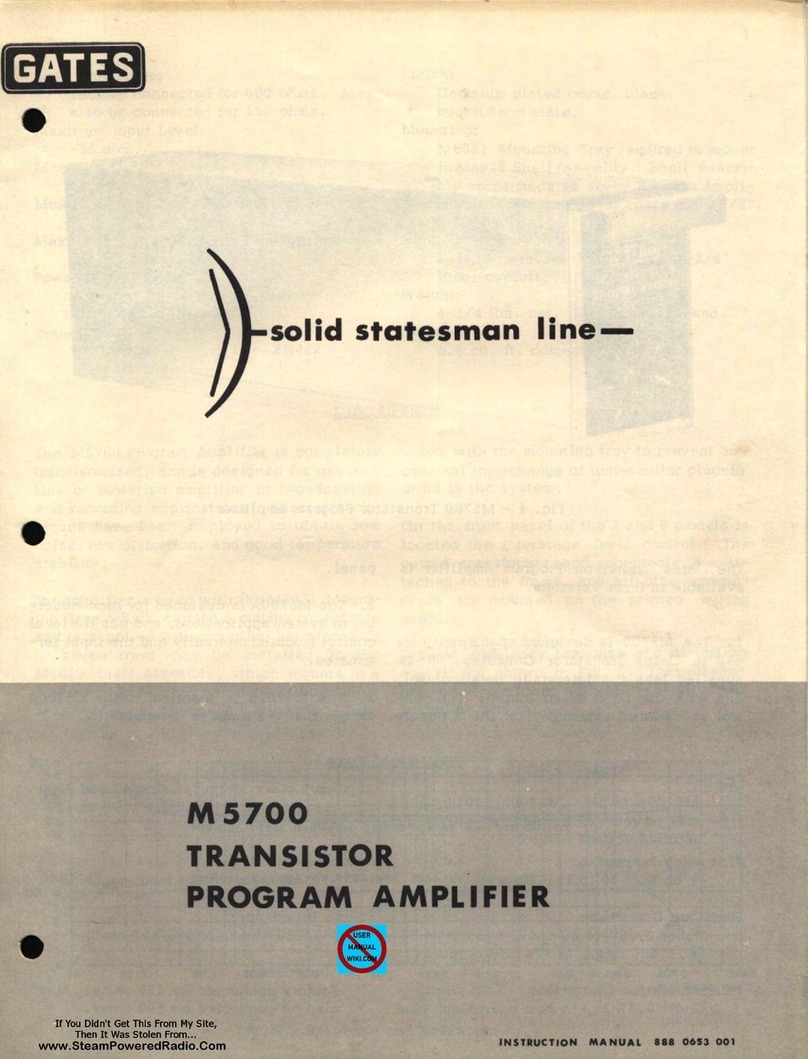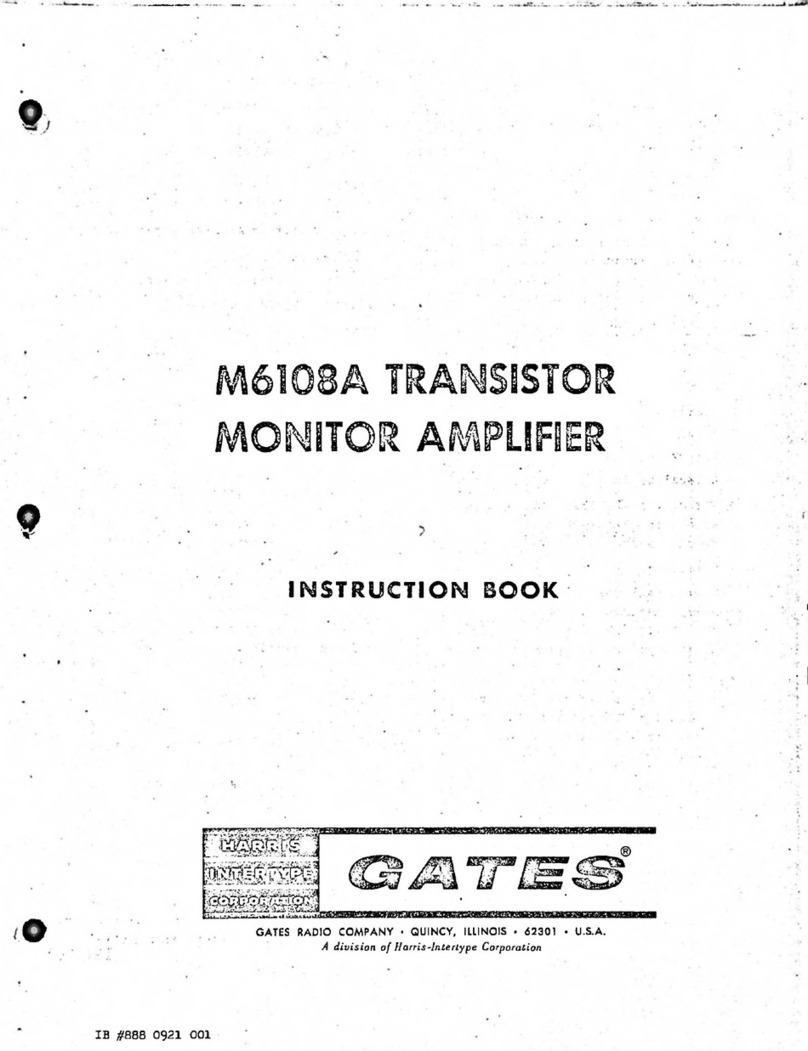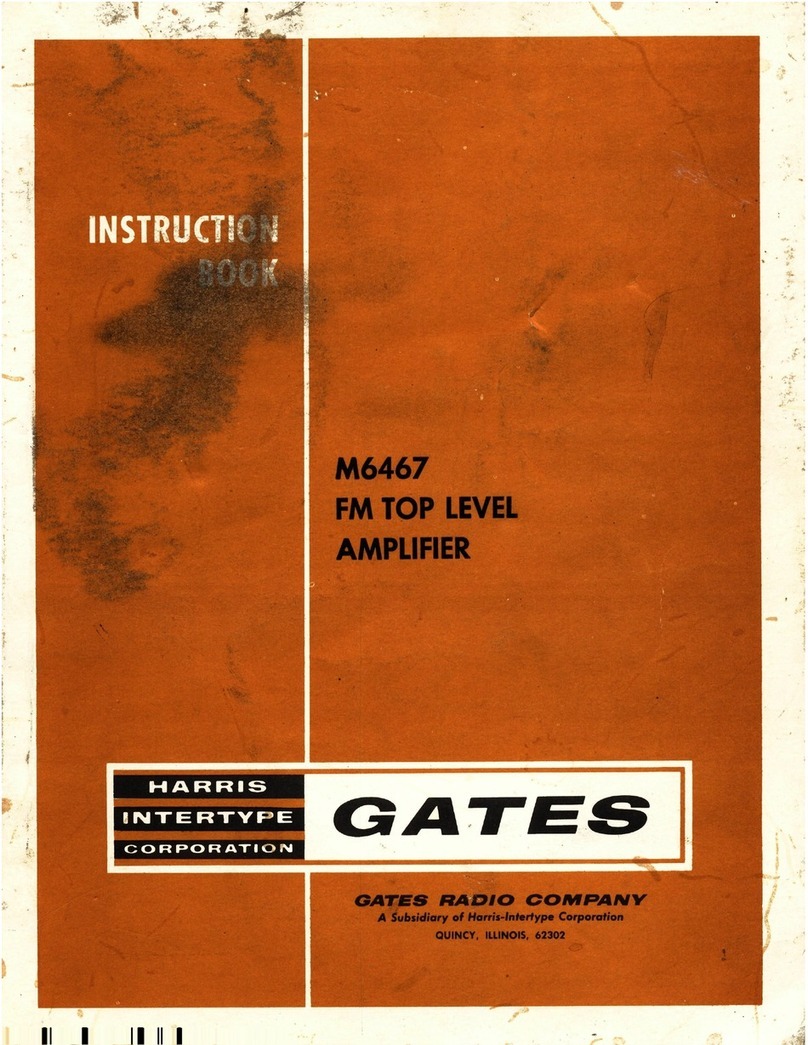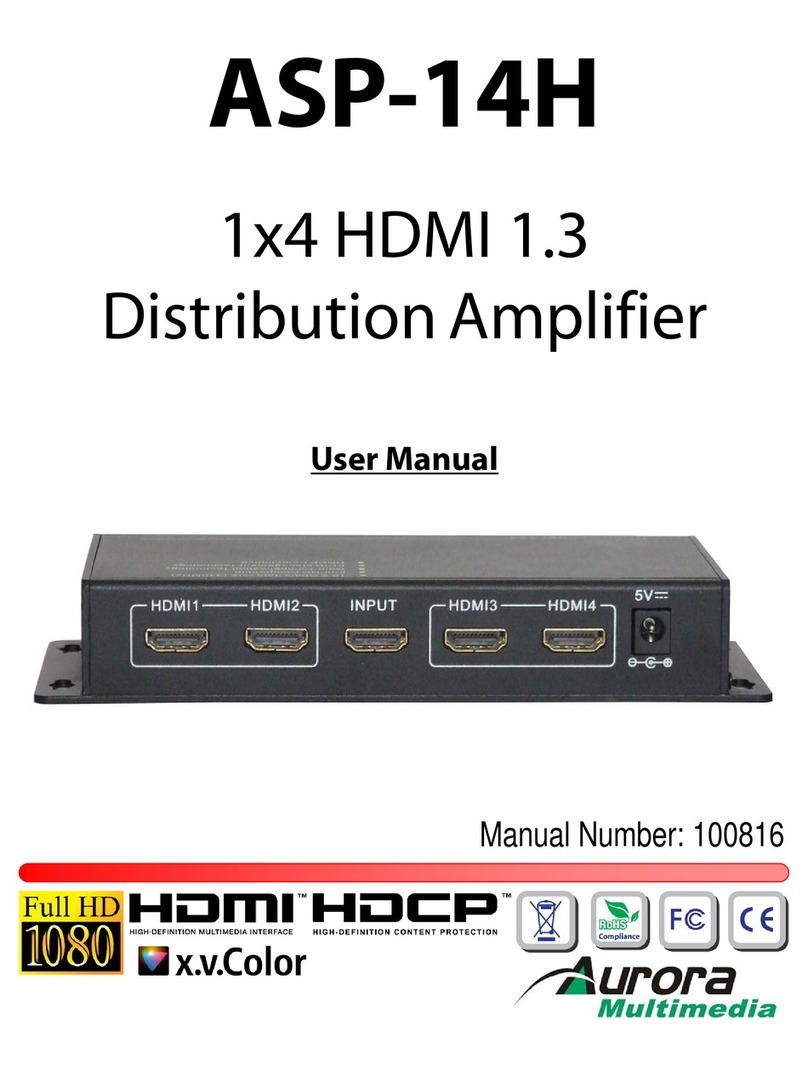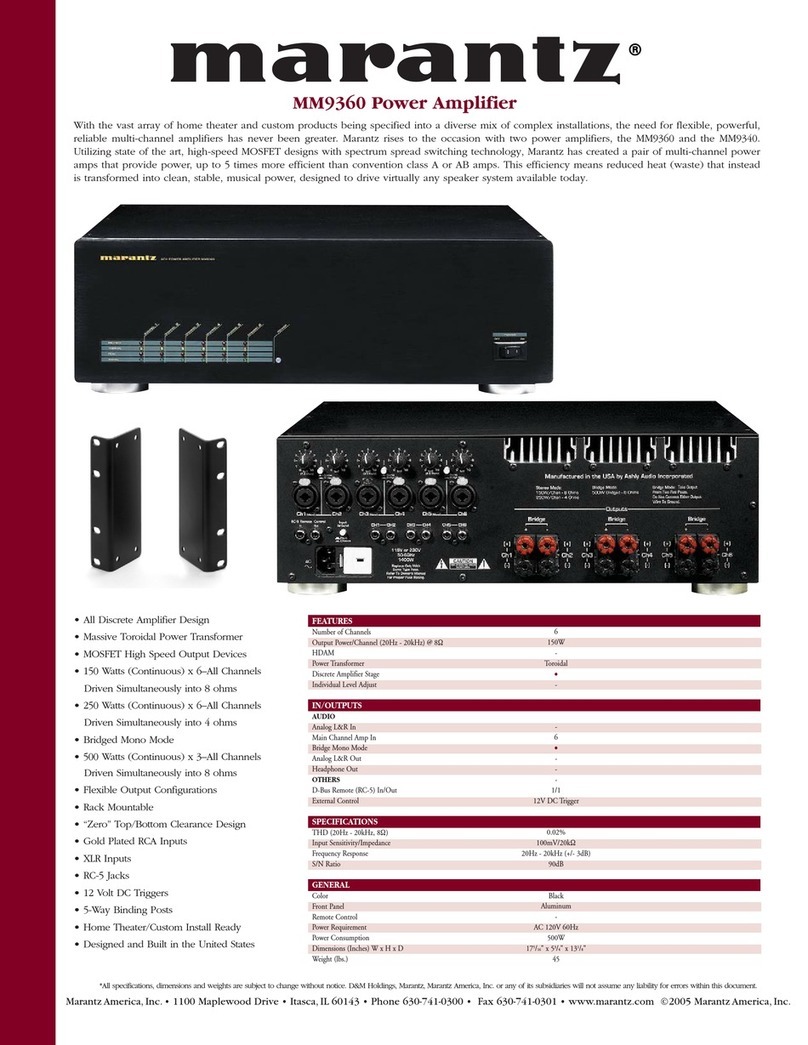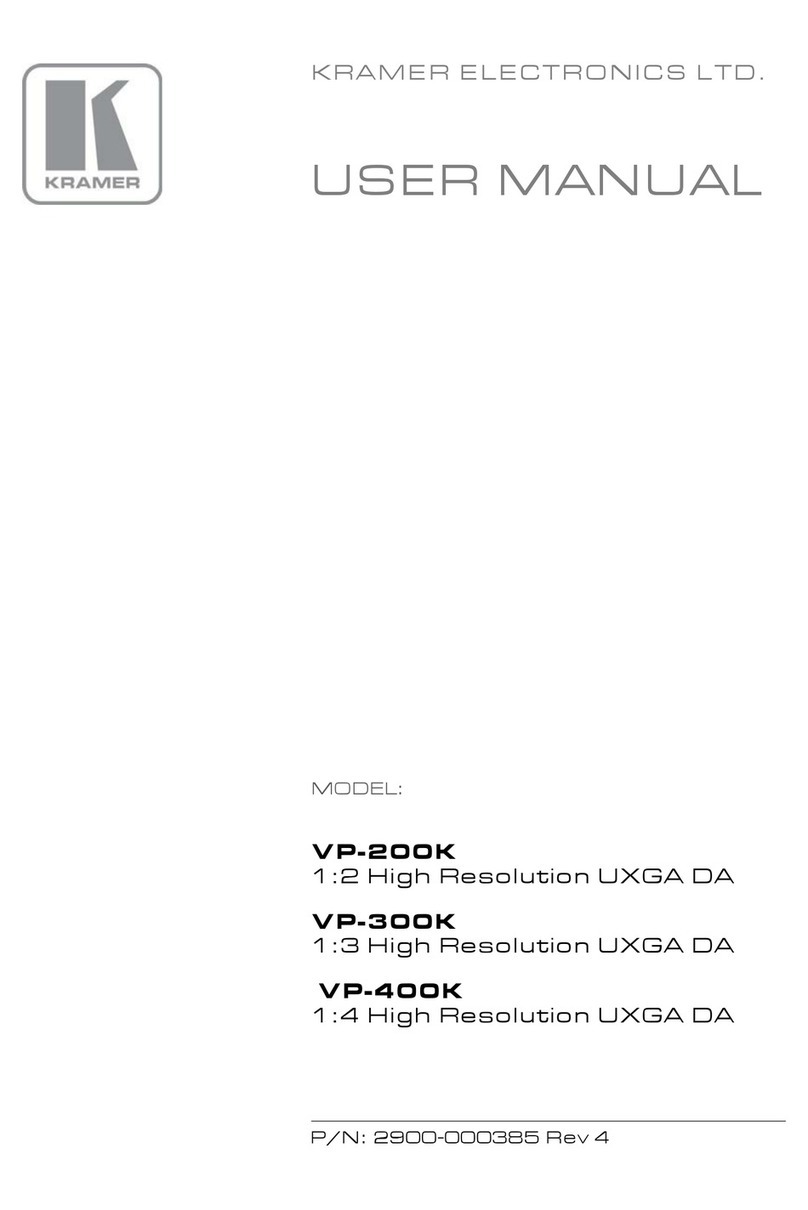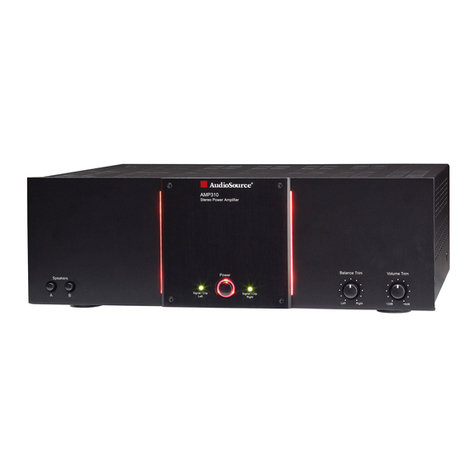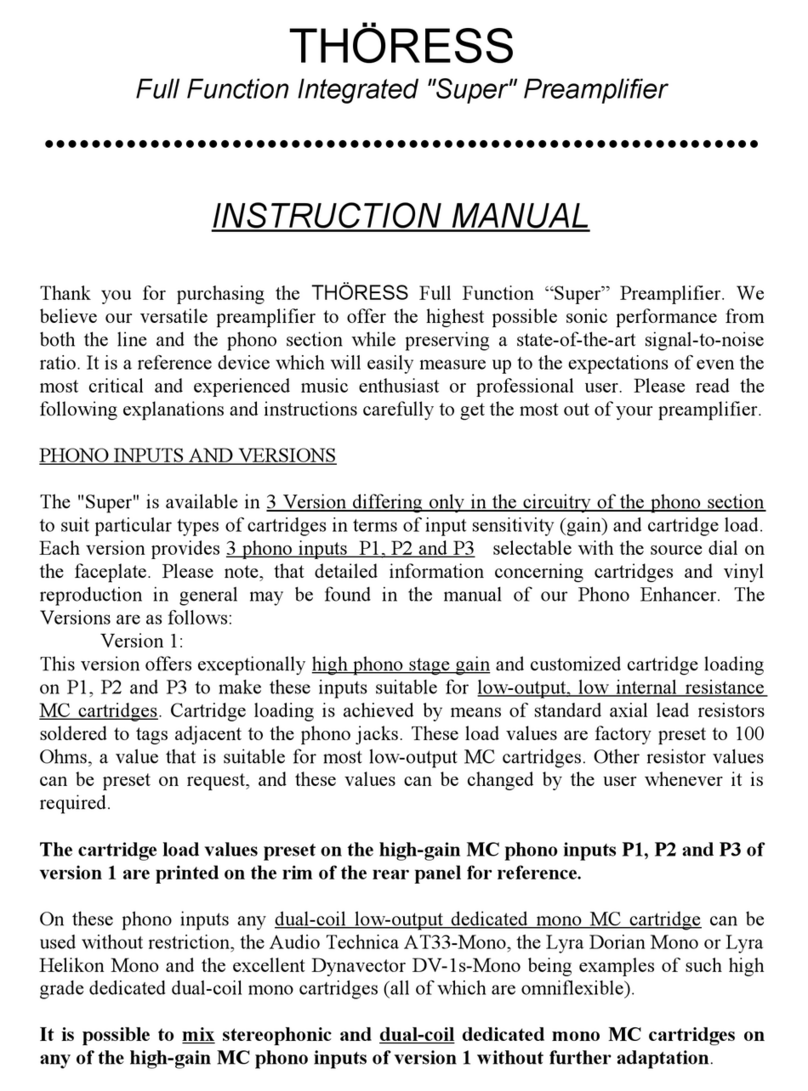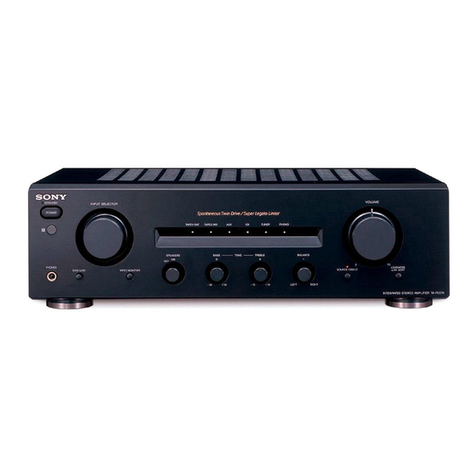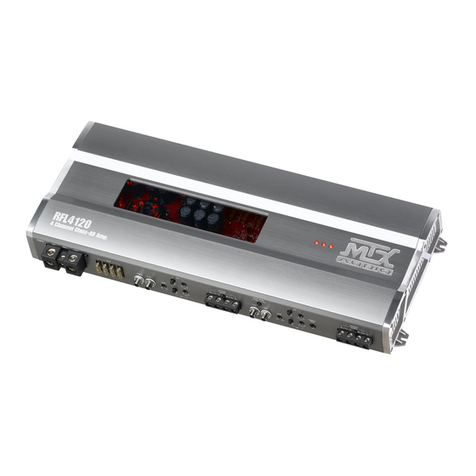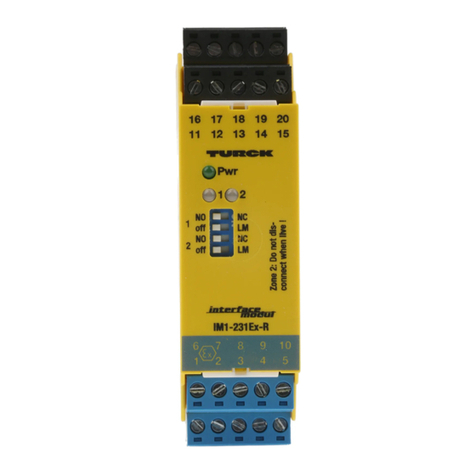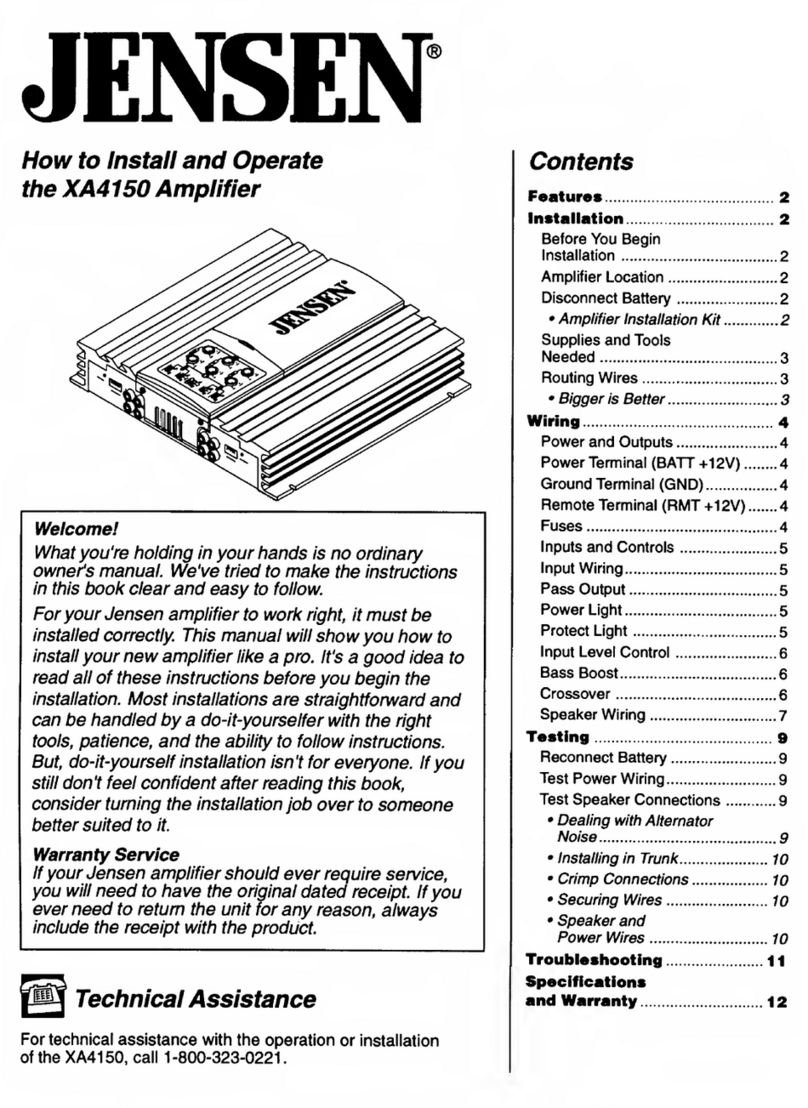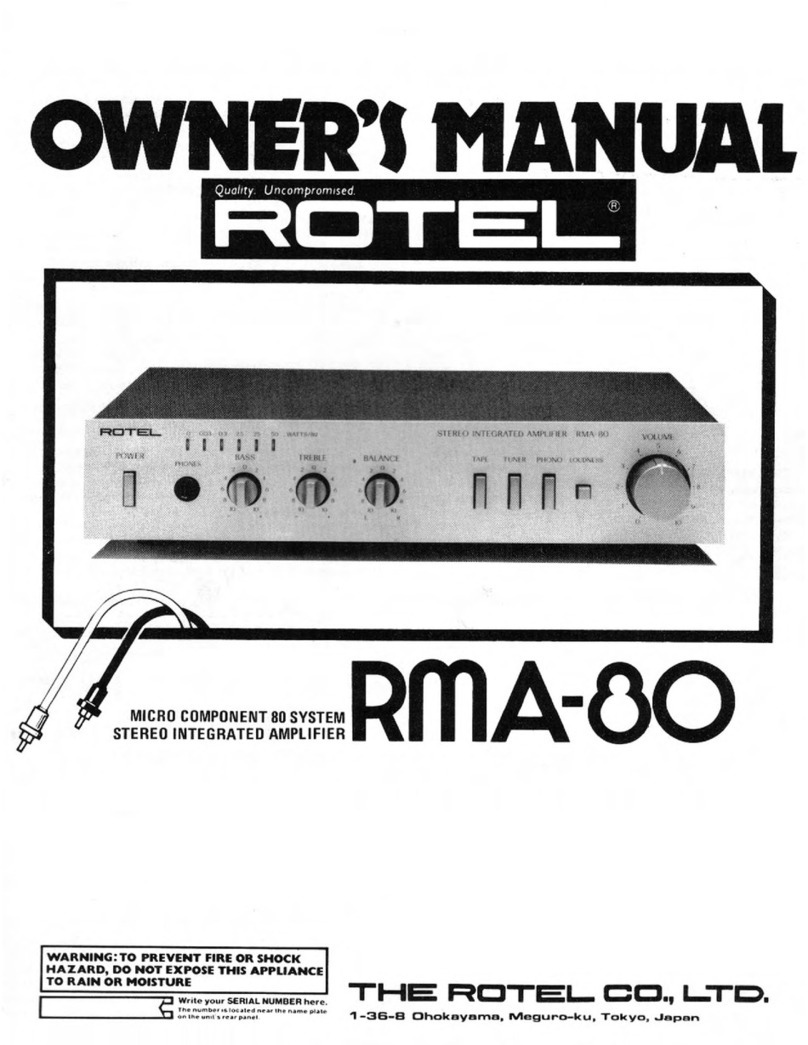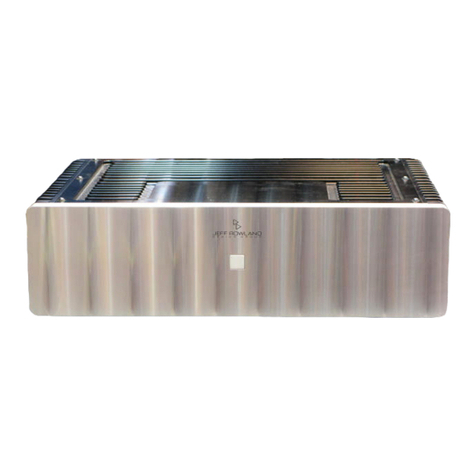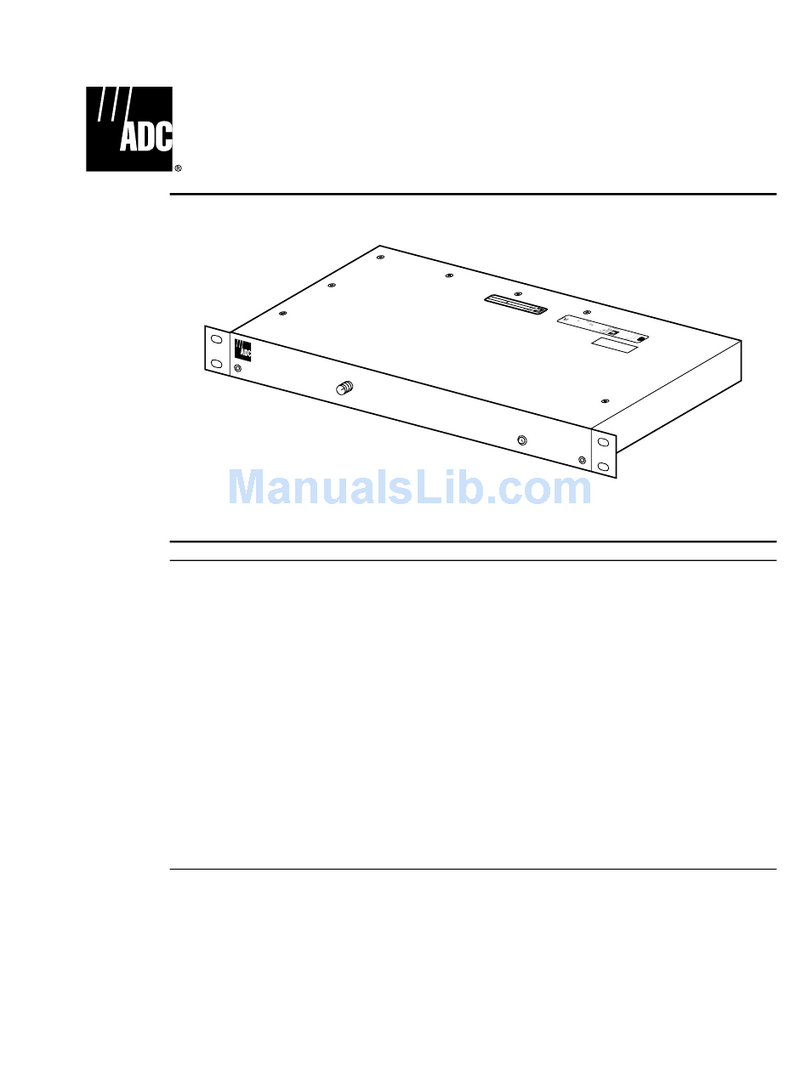Gates CRITERION Series User manual

HARRIS
GATES
·
INTERTYPE
CORPORATION
AUTOMATIC
TAPE
CONTROL
DIVISION

.'\
'..
'\
0.
\
\)
\
WARRANTY
Se
II
er
warrants
new
equ
i
pmen
I
manufactured
by
Gale
s
Rod
io
Company
ogoi
n
st
defect
sin
materia
lor
work·
man
sh
ip
ot
the
ti me
01
del
i
very
thereof,
thol
deye
10
p
under
norma
I
use
wi Ih in 0
per
iod
a
fane
yeor
(6
month
s
on
moving
parIs)
from
the
dale
of
shipment,
of
which
Purchaser
gives
Seller
prompt
wrillen
notice.
Other
manufacturers'
equipment,
if
any,
including
electron
lubes,
and
lowers,
sholl
corry
only
such
monufoc·
turers'
stondord
warranty,
Seller's
sole
responsibility
for
any
breach
of
the
foregoing
provision
of
this
conlrOCI,
with
respect
to
any
equipment
or
ports
not
conforming
to
the
warranty
or
the
description
herein
contained,
is
at
its
option,
(a)
10
repair
or
replace
such
equipment
or
ports
upon
the
return
thereof
I.o.b.
Seller's
factory
within
the
peri·
ad
aforesaid,
or
(b)
to
occept
the
return
thereof
f.o.b.
Purchaser's
point
of
installolion,
whereupon
Seller
sholl
ei
ther
(l)
issue
a
credi
t
to
Purcho
ser'
s
account
hereunder
in
on
amount
equal
to
on
equ
i
tobl
e
portion
of
the
lotol
contract
price,
without
interest,
or
(2)
if
the
total
contract
price
has
been
paid,
refund
to
Pur
·
chaser
on
equitable
portion
thereof,
without
interest.
If
Ihe
Equipment
is
described
as
used,
it
is
sold
as
is
and
where
is.
If
the
contract
covers
equipment
not
owned
by
Seller
at
this
date
it
is
sold
subject
to
Seller's
acquisition
of
posseSSion
and
title,
Se
II
er
assume
s
no
re
span
sib
iiiIy for
des
ign
choracteri
st
ic
s
of
spec
i
01
equi
pmen
t
manufactured
to
spec
i
fi·
coti
on s
su
ppl
i
ed
by a r on
beho
If
of
Purcha
ser.
Se
II
er
sha
II
not
be
Ii
abl
e fa r
any
expen
se
whether
for
repoi
rs,
repl
acement
5,
materia
I,
serv
ice
or
atherwi
5
e,
incurred
by
Purchaser
or
modili
cation
s
made
by
Purch
oser
to
the
Equ
i
pmen
t wi
thout
pri
or
wri
tten
con
sent
of
Seller,
EXCEPT
AS
SET
FORTH
HEREIN,
AND
EXCEPT
AS
TO
TITLE,
THERE
ARE
NO
WARRANTIES,
OR
ANY
AFFIRMATIONS
OF
FACTOR
PROMISES
BY
SELLER,
WITH
REFERENCE
TO
THE
EQUIPMENT,
OR
TO
MERCHANTABILITY,
INFRINGEMENT,
OR
OTHERWISE,
WHICH
EXTEND
BEYOND
THE
DE-
SCRIPTION
OF
THE
EQUIPMENT
ON
THE
FACE
HEREOF.
RETURNS
AND
EXCHANGES
Do
not
return
any
merchandi
se
wi
thou
tour
wri
lien
appro
va
land
Return
Authori
zotion
.
We
wi
II
proYi
de
speci
0 I
sh
i
pping
in
sfruction
s
and
a
code
number
th
01
wi
lias
sure
proper
hond
Ii
n9
and
prompt
issuance
of
credi
I.
P I
eo
se
furn
ish
camp
I
ele
detai
Is
as
to
circum
stan
ce
s
and
reason
s
when
requesti
ng
retu
rn
of
m
er-
chand
i
se.
Cu
stom
buiIt
equ
i
pmen
t
or
merchond
is
e
speci
a
II
y
ordered
for
you
is
not
returnobl
e.
Where
return
is
at
Ihe
request
of,
or
for
tne
convenience
of
the
customer,
°
restocking
fee
of
15%
will
be
charged.
All
returned
merchandi
se
must
be
sent
freight
prepaid
and
properly
insured
by
the
customer.
When
writing
to
Gates
Radio
Company
about
your
order,
it
will
be
helpful
if
you
specify
Ihe
Gotes
Factory
Order
Number
or
Invoice
Number.
/
WARRANTY
ADJUSTMENTS
In
the
event
of
equipment
failure
during
Ihe
warranty
period,
replacement
or
repair
ports
may
be
provided
in
accordance
wi th
the
provi
5
ions
of
the
Gotes
Warranty.
In mo
st
co
ses
you
wi
II
be
requ
i
red
to
return
Ih e
defective
merchondise
or
port
to
Gotes
f.o.b.
Quincy,
Illinois,
for
replacement
or
repair.
Costof
repair
ports
or
replacement
merchandise
will
be
billed
to
your
account
ot
the
time
of
shipment
and
compensating
credit
will
be
issued
to
offset
the
chorge
when
the
defective
items
are
returned.
MODIFICATIONS
Gates
reserves
the
right
to
modify
the
design
and
specifications
of
the
equipment
shown
in
this
catolog
without
notice
or
to
withdraw
cny
item
from
sole
provided,
however,
that
any
modifications
sholl
not
ad-
versely
affect
the
performance
of
the
equipment
so
modified.

CONTENTS
In
troduct1on
I
Section
1
~neral
Descr1ption
1-1
1.1
Playback
Unit
1-1
1.2
Kecorn
Amplifier
1-1
1.3
SpecificR
t1on!;
1...2
1.J.1
Playback
Un1
t
1-2
1.J.2
hecord.
Amplifier
1...3
Section
2
Ins
talla
tion
2_1
2.1
Unpacking and
Inspection
2
..
1
2.2
Installation
Procedure
2-1
2.2.1
General
2-1
2.2.2
Playback,
Monophonic
2-1
2.2.3
Playback,
Stereophonic
2_1
2.2.4
Playback/Record,
Mono
or
Stereo
2-1
2.2.5
Remote
Control
Connections
2-1
Section
J
Operation
3-1
3.1
Recording
3-1
3.1.1
Record
Amplifier
Contral
Functions
.3-1
3.1.2
Recording
Procedure
3-1
3.2
Playback
)
..
2
3.2.1
Control
Functions
3-2
3.2.2
Playback
Procedure
3-2
Section
4
Adjustments
4-1
4.1
kecording
Amplifier
4-1
4.1.1
Blas
Level
4...1
4.1.2
Cue
Record
Levels
4_2
4.1.3
Cue
Frequency
4.t2
4.2
Playback
4-2
4.2.1
Cue
Sensi
t1
vi
ty
4..2
4.2.2
Program
Gain
4..2
4.2.3
Head Alignment 4_2
Section
5 Maintenance 5-1
5.1
Record
Amplifier
5-1
5.2
Playback
Uni
t 5-1
5.2.1 Heads 5-1
5.2.2 PreSSUl'e
Roller
5-4
5.2.3 Cue
Sensi
tiv1
ty
Levels
5-4
5.2.4
Deck
AdjUB tments
5-4
.5.2.5 Maintenance
Checklist
5-6
Section
6
Parte
List
.. Drawinge 6_1
6.1 P1aybaek
Unit
6_1
6.1.1
Parte
List
6..1
6.1.2
Drawing. 6-5
6.2
Record
Amplifier
6_6
6.2.1
Part.
Lilt
6.6
6,2.2
Draw1.nc. 6-9

IM'mODOC'l'ION
In
1962
the
lIajor
manuf'acturera
of
oartridge
equipment
belan
a
co.operative
effort
to
establish
Bt&ndarde
for
cartridge
tape
equipllent.
A.
aerie.
of
.eet.i.ngs,
under
the
direction
of
the
NAB,
extended
into
1964
and
d~
this
time,
certain
tel'lU
came
into
general
use.
Many
of
then
tenus
are
used
in
this
manual.
and
are
defined
below.
CUE
TRACK:
'lbe
lower
track
of
• two
track
cartridge
monophonic
Bystem,
and
the
loves
t
track
of
a
three
track
cartridge
:;t.ereophon1e
system.
PROGRAM
TRACK:
'lbe
upper
track
of
a
two
track
cartridge
IIlOnophonic
sy.tem,
the
upper
track
(left
channel)
and
II1ddle
track
(right
channel)
of
•
thre@
track
cartridge
stereophon1c
system.
BEAD
A:
The
magnetio
(reproducing)
head
nearest
the
cap8t&n.
HEAD
Bf
lb.
IIUIgnet1c
(record1ng)
head
adjacent
to
head
A.
PRIMARY
CUE
TONE:
A
1000
cycle
tone
recorded
on
the
CUE
TRACK
&nd
used
for
positioning
the
tape
in
the
cued
position;
the
stop
tone.
SECONDARY
CUE
TONE:
A.
1,50
cycle
tone
recorded
on
the
CUE
TRACK
&nd
used
&8
the
!lend
of
lHIu&ge
l1
a1gnal.
This
tone
is
generall,y
Wled
for
starting
otller
equipllent
in
an
automation
system.
TERTIARY
CUE
TONE,
An
8000
cycle
tone
reoorded
on
the
CUE
TRACK
and
tl8ad
..
desired.
This
tone
haa
been
known
in
the
past
••
an
aux:111uy
or
trip
crue
tane.
CARTRIDGE
SIZE A: The 51&e J.
cartridge
vas
previowsly
known
&II
Series
300
or
the
aaallest
,ime,
C~TRIDGE
SIZE
B,
lhe
a111e
B
cartridge
waa
previously
known
a5
Series
600,
CAR'ftUDGE
SIZE C: The
Bize
C
cartridge
v."
prev1oual,y
known
••
Series
1200.
I

GENIIW..
DESCRIP'l'IOfi
1.1
PlAYBlCX
UNIT
Playback
1Jn1
t
is
a
state
SDlGLL.TONE
CWil
rack
pllmel
or
trWine
deek
console
in
or
Second
and
tone
operation
il
All
versiona
of
the
Criterion
series
equip...
ment
meet
NAB
and
offer
features
such
as
24
volt
DC
ex:temll
s.n.
tching
for
remote
starting
• and
adaptab1l1
t7
automated
systems.
Electronics
are
of
plug-in
i
inelu:Ung
rela7l,
cireui
t
modules.
front
panel
sw1
teh
anembl1es
and
extemal
connections.
The improved.,
laminated
heade
are
high
qwa1ity
ill...aeW
race
belds
pro
...
viding
for
wear
and
low
oxide
accumulation.
Improved
solenoid
action
and
shock
mounted
relays
contribute
to
the
quiet
operation
ot
the
unit,
and
the
proven
full-swing
pressure
wheel
linkage
makes
actual
Itudio
operation
easy
fool-proof.
heart
of
the
Criterion
Series
playback
transport
with
i U
hysteresis
synchronous
pod
t1
ve
the
heavy-duty
Ate
tape
speed
direct
capstan
dri
ve
motor.
The
Serles
comparable
to
men
t
type
ball
Plug-in
circuit
offer
the
finest
engineering,
The new modula:r
construction
may
be
required
to
Make
the
Crt
terion
Series
of
existing
equipment
including
Quality
pin
board
construction
component
access
uintenance
be
is
used
to
power
circuit
modules
and
reliable
at
ill
times.
1.2
RECORD
Anr~r
Serles
Recording
_
............
speed
act'lm"&
preciBion
nutter
less
than
•
solid
ll!ltate
for
modifioations
as
oompatible
with
other
ukes
Ate
equip!lent
now
in
throughout
for
eas7
A
regulated
power
supply
oorreot
operating
parameters
fo
r.
use
in
any
monophonio
As
is
the
Criterion
Playback,
the
Recording
AmplU'1er
is
available
sl1de.out
~ack
panel
mounting
or
tr1ml1ne
desk
oonsole
in
either
monophonic
or
stereophonio
• and
third
tone
oper-
ation
is
optional.
Operation
on
regulated
DC
power from
the
associated
Payback,
aUUl"e!
correot
operating
parmeters
at
all
times.
The top...
surface
of
ill
components
in
the
Recording
Amplifier
provides
and
effioient
maintenance.
Unique
terminal
board
oonstruotion
permits
easy
field
modification
of
any
single-tone
amplifier
to
three.tone
operation.
1-1

1.3
SPEcIFICATIONS
1.3.1
PLAYBACK
UNIT:
POWER
SOURCE:
117
volts.
60
cps,
50
cps
on
special
order.
POWER
REQUIREMENTS:
65
watts
maximum.
FREQUENCY
RESPONSE:
The
overall
record-playback
response
of
the
Crt
tenon
Series
System
1s
plus
or
minUl
2 db
from
50
to
12,000
cps
and
pl\l8
or
!linus
4
db
from
.50
to
15.000
cps.
NOISE:
.55
db,
or
better,
below
the
1'IlaximUll1
signal
of
400
cps
at
3.
mD.
DISroRTION:
Record
to
Playback,
2~
or
less,
at
0
VU
record.
level,
400
cps.
EQUlLIZATION:
In
accordance
with
NAB
cartridge
recording
and
reproducing
standards.
The
recording
amplifiers
are
equalized
to
ma1nta1.n
the
required
playback
characteristics.
AMBIENT
TEMPERATURE:
55
degrees
C., maximum
OUTPUT,
PLAYBACK:
plWl 4 dbm,
nOrnluly
_6VU,
600
OM!.
balanced.
CUE
SIGNALS: The Cr1
terion
equipment
is
furnished
with
the
standard
1000
cycle
Primary
Cue.
150
cycle
Secondary
and
8000
cycle
Tertiary
Cu.
facilities
are
available
as
optional
equipment.
REMOTE
CONTROL:
All
control
functions.
TAPE
SPEED: ?t
inches
per
second.
TAPE
DRIVE
SYSTEM:
Direct
capstan
drive,
sealed
ball
be&r1ngs.
WOW
AND
FLUTTER:
•
2~
or
less.
TIMING
ACCURACY:
•
4~
or
better.
D:DfENSIONS:
Rack
Mount.
7"
high,
19"
panel
width.
13t"
deep.
Desk_Top
Cabinet.
5"
high,
lJiIl
vide,
14"
deep.
WEIGHT:
2.5
pound8
HEAOO:
In
accordance
with
HAS
Standards.
Pem1ts
monitoJ'1nc
while
recording.
1-2

1.
:3.
2
RlCORDDlG
AKPLInER
POWER
SOtmCEs
Fro.
"sulated
.'apply
or
PlQbaak
Unit.
AUDIO
llIPUT1 Minua
20
dbII
~,
pIa
18
dbBl
IBAZ1IIla,
600
oha
balanced.
BUS
QSCI.l.J..,.lTQRS:
Separate
puah-pull.
bia.
oaoUlat.or.
tor
Progrlll
am
Cue
circlli
ta
•
TORE
GENERATORS:
Ind1rtdual
tone
oac1.l1.ators
tor
each
frequency.
Frequenc.r
and
output
adjustable.
AMBIENT
~!:RA.TUREI
55
degreell
C. maxbnIm.
REMOTE
CONTROL:
All
control
!'unction
••
DIMEHSIONS:
R&ck
Mount, st
fl
high,
19"
panel.
ut"
deep.
_
Deak-top
Cabinet,
4"
high,
1:3
j/8
11
wide,
l2t"
d
••
p.
WEIGHT:
17
pounds
1-:3

INSTALLA.
T10N
SECTION
2
2.1
UNPACKING
AND
INSPECTION
Remove
all
packing
material
and
carefully
lift
the
units
from
the
boxes
. .
Check
the
equipment
against
the
packing
slips.
Visually
inspect
the
un!
ts
for
any
apparent
damage
and
for
missing
or
loose
component..
Check
for
proper
operation
of
the
front
panel
controls.
Any
claims
ror
deage
should
be
fUed
promptly
with
the
transportation
agency.
If
such
elaims
are
to
be
filed,
all
packing
Material
Must
be
retained.
2.2
INSTALLATION
PROCEDURE
2.2.1
GENERAL:
The
location
.in
an
individual
station
will
be
detel1'llined
by
the
9.rrangel1lent
of
..
..he
Main
control
room
faeUi
ties.
The
placement
of
~quiP'1ent
and
wiring
should
be
planned
carefully
before
any
installation
work
is
started.
Care
should
be
taken
to
provide
for
adequate
ventilation.
2.2.2
PLAYBACK.
MONOPHONIC:
:onnect
a
two_conductor
input
terminals
A1Xi
the
Playback
Connector
J2.
terminal
1.
See
Figure
shielded
cable
between
the
desired
audio
console
600
ohm
program.
output
terminals
:3
and'
:5
of
The
shield
of
the
cable
should
be
connected
to
2.2.
2.
2.
J
PLAYBACK.
STEREOPHONIC:
j
~onnections
for
the
Stereo
left
channel
are
the
same
as
for
the
monophonic
aooio
channel.
The
right
stereo
channel
is
connected
to
terndnals
4 and
"6
Hi
tb
pin
2
for
connection
to
the
shield.
Phasing
should
be
carefully
observed.
Terminals
1-3-5
are
identical
to
terminals
2-~6
respect!
vely.
See
Figure
2.2.
2.
2.
4
PLAYBACK-RECORD
MONOPHONIC
OR
STEREO:
Inst.al.l
the
Playback-AmpUfler
interconnecting
cable
between
eonnectors
J)
of
tile
Playback
~
P602
of
the
Recording
Ampl1fier.
Connect
the
audio
input
(monophonic
or
stereo
left
channel)
to
tenlinall
:3
and
5
of
J601
wi
th
the
shield
conneeted
to
tenllinal
1.
For
stereophonic
in.tall.tiona.
connect
the
right
channel
audio
to
tenainals
4
and
6
ot
J601
and
the
shield
to
te
nllinal
2.
See
Figure
2.
4.
2.2.5
REMOTE
CONTROL
CONNECTIONS:
III
control
function8
of
both
the
Playback
&nd
Record
AIIpl1!1er
lm1
ta
IIQ'
be
l"elDOte
controlled.
Se.
chart..
2.2
and
2.4
tor
proper
connections.
2-1

Terminal
1
2 - 3
4 - 5
6 - 7
B - 9
10-
11
12-
13
14
15
1
3 - 5
2
4 - 6
CRITERION
PLAYBACK
UNIT
-
~
(@)
I-
~
r---
~
.....
--
[ I
~
I I -
$108
OFI
~
JI
32
, , 1
-13
12-
I I I
~=ITB-
III
~
1 1 I
.-
OF2
6-
I'
I I
II
I , ,
-I
-
REAR
VIEW
EXTERNAL
CONNECTIONS
Function
CONNECTOR
J 1
Ground
Remote
Start
Remote
Stop
(see
note
1)
J3
~I-I
6-
1'1
1'1
1-7
li-
..!...!..!...
I
Auxiliary
Start
(momentarily
closed
as
unit
starts)
Cue
Start
(momentarily
closed
as
unit
cues)
(see
note
2)
Auxiliary
Switching
(Closed
momentarily
by
Secondary
Tone)
Auxiliary
Switching
(Closed
momentarily
by
Tertiary
Tone)
Remote
STOP
light
circuit
No
connection
CONNECTOR
J 2
Audio
Ground
Monophonic
(or
left
stereo)
audio
output
Audio
Ground
Right
Stereo
audio
output
(if
used)
(see
note
3)
CONNEcroR
J3
Connector
J3
is
for
use
with
the
Playback/Recording
Amplifier
connectin2
cable.
Notes:
1.
These
terminals
are
strapped
together
(on
the
back
of
the
connector)
at
the
factory.
Remove
this
strap
if
the
REMOTB
STOP
facility
is
used.
2.
Relay
contacts
may
be
changed
to
provide
a
momentary
open
circuit.
3.
Phasing
must
be
observed
in
Stereo
systems.
Terminals
1-3-5
are
identical
to
terminals
2-4-6
respectively.
FIGURE
2.2

RECORDING
AMPLIFIER-
REAR
VIEW
.T601
P602
FIGURE
2.3
EXTERNAL CONNECTIONS
TERMINAL FUNCTION CONNECTOR
601
1
Audio
Gxound
3-5
Monophonic
(or
stereo)
2
Audio
Ground
4-6
Right
Stereo
Audio
input
(if
used)
onnector
602
cable.
OJNNECIOR
for
use
with
the
CONNECTOR.
603
1-2
.3
4
5-6
7-6
9-10
Remote
Record
Set
Remote
Lights
Common
No
Connecti:')n
Remote
Remote
Tone
Keying
No
Connection
FIG.
2.4
Tone
Keying
J603
."
Amplifier
connecting

OPERATION
SECTION
J
3.1
RECORDING
3,
3.1
RECORDING
AMPLIFIER
CONTROL
FUNcnONS,
GAIN
CONTROL:
'lbe
Record~
.blp111'ier
gain
control
MOB
is
und
tor
regulating
the
recording
level
as
indicated
by
the
VU
1Ieter
M601.
~ORD
SET: 'lbe
Record
Set
switch
S601
is
used
for
placing
the
production
system
in
the
recording
mode.
SECONDARY
CUE:
'!he
Secondary
Cue
swi.
tch
s603
is
used
for
keY'ini
the
150
cycle
tone
generator.
tERTIARY (AUXn,IARY)
CUE:
The
Tertiary,
or
Auxiliary,
Cue
switcb
S602
i.
used
tor
keying
the
8000
cycle
tone
generator.
:3
.1.2
RECORDING
PHOCEDORE;
The proceciW'e
tor
recording
one
or
more
productions
1.,
al!!
follows:
a.
b.
c,
d.
e.
f.
Insert
an
ERASED
tape
cartridge
1nto
the
right
side
ot
the
cartridge
slot
in
the
Playback
Unit.
Note
that
the
STOP
indicator
1s
illum1n&ted
indicating
the
cartridge
1s
properly
placed.
Momentarily
press
the
RECORD
SET
switch
8601.
The
svitch
w1ll
be
ll.lllllinated
by
the
tnt.mal.
pilot
lup.
Adjust
the
INPUT
CONTROL
MOB
so
the
program
level
reads
o
(zero)
on
the
VU
meter
on
the
most
intense
program
peaks.
Press
the
START
switch
on
the
Playback
Unit
and
start
re-
cording
immediately.
Opon
completion
of
the
recorded
production.
1I01Ientarily
press
the
STOP
switch
ONLY
11' lIore
than
one
production
is
desired
on
the
lUte
cartridge.
If
only
one
production
is
to
be
llJIIed
on
the
cartridge,
allow
the
tape
to
continue
nznning
1ll'ltil
it
is
stopped
by
the
automatic
cue
tone.
When
reeordinl
more
than
one
production
on
a
single
tape
cartridge.
follow
the
procedure
l1st.d
in
steps
c
through
•
for
.ach
recording.
Upon
coaplet1.on
of
the
1'1nal.
recorded
production
~
allow
the
tape
to
continue
running
until
1t
1.
stopped
by
the
automatic
cue
tone.
3-1

The
1000
cycle
Primary
cue
tone
is
recorded
automatically
at
the
beginning
of
the
recording.
If
the
Tertiary
tone
is
to
be
used,
it
may
be
applied
at
any
time
during
the
recording.
If
the
Secondary
(end
of
message)
tone
is
used,
it
should
be
applied
1lnmed1ately
af'ter
the
end
of
the
program
material.
If
desired.
the
Secondary
&nd
Tertiary
tones
may
be
inserted
after
the
message
has
been
completely
recorded.
This
permits
monitoring
and
accurate
placement
of
the
tones.
J.
2
PLAYBACK
J.2.1
CONTROL
FUNCTIONS:
START_RUN:
The
START
switch
51
causes
the
control
cireui
ts
solenoid
to
be
energized;
and
the
tape
to
be
set
in
motion.
is
illuminated
by
an
internal
lamp
when
the
tape
is
rmming
Playback
or
Record
mode.
and
the
This
15
wi
tch
in
a1
tiler
the
STOP_READY:
The
STOP
switch
S2
is
used
to
manual.ly
stop
tape
motion.
This
ewi
ten
is
illuminated
by
an
internal
lamp
l'hen
the
cartridge
is
properly
:!.nserted
and
the
Playback
1s
in
the
IIrea.dy" mode.
ON_OFF:
The
ON_OFF
s'Wi
tch
S3
applies
power
to
the
entire
unit.
An
internal
neon
lamp
illuminates
this
switch
when
the
unit
is
ON.
PFlDGRAM
GAIN:
The
Progr&lll
Gain
Controls
Rl
and
RJ
are
lIlO1.mted
on
the
main
chassis.
and
are
used
for
adjustment
of
program
output
level.
R3
is
not
used
in
monophonic
uni
ts.
CUE
SENSITIVITY: The
Cue
Sensi
t1
vi
ty
control
R2
il5
mounted
on
the
main
chas!5is.
3.2.2
PLAYBACK
PROCEDURE:
The
procedurt!
for
routine
on-the-air
playback
of
program
material
is
as
follo~:
a.
Insert
a
recorded
Uipe
cartridge
into
the
right
side
of
the
cartridge
slot.
b,
Observe
that
'\:be
STOP-READY
control
is
illuminated.
indicating
the
cartridge
has
been
properly
inserted,
and
that
the
un1
t
1s
ready
for
on-the-air
playback.
c.
Momentarily
press
the
START
switch
51.
Tape
motion
will
be
!!tarted
and
will
continue
until
the
automatic
cue
tone
i8
picked
up
by
the
cue
head.
3-2

~DmN'IS
SECTION
4
4.1
REX;ORDING
AMPLIFIER
4.1.1
BIAS
LEVEL:
When
purchal!ling
a new
record
amplifier
or
replacing
record
heads.
it
w:1ll
be
necessary
to
check
the
bias
adjWltaent
on
the
record
amplifier.
Since
the
inductance
of
the
record
heads
IB&:1'
vary
tJoa.
head
to
head,
biaB
voltage
should
be
readj'wlted
,ach
time
the
record
amplifier
is
used
with.
new
head
or
a
different
playback
u:nit
in
order
to
maintain
proper
recorded
frequency
response
and
output.
'l'be
bias
&dj118t-
men
t
should
be
made
uaing
tbe
type
of
tape
which
w1ll
normally
be
ued.
The
following
procedure
should
be
ued
when
bia8
adjustments
are
required:
SET_
UP
__The
output
of
the
pll3'back
should
be
connected
to
a
console
or
any
convenient
VU
meter.
Connect
an
audio
oacilia
tor
to
the
record
amplifier
input.
For
:;'oeation
of
adjustment
controls
..
e
Record
Allpl1.t1er
Chassis
Layout.
Steps
to
follow
in
adjustment--
1.
Set
the
oscillator
frequency
at
1000
cycles.
2.
Insert
an
erased
Jt
or
.5t
minute
cartridge
in
the
Playback
Unit.
J.
On
the
Recording
Amplifier_Press
the
Record
Set
Button
and
adjuat
the
Record
Level
to
-5
VUe
4.
While
recording,
monitor
the
Playback
output
and
adjust
trimmer
CB06
with
a
non-magnetic
8crewdri
vel'
for
marllIIlIII
playback
reading.
Readjuat
C806
in
both
a
clockwise
ard
cO'Ol'lterclockwise
direction,
untu
a t
db
drop
in
output
i.
noted..
Then
adjust
to
tile
exact
peak.
NOTE:
Re-erase
cartridge
if
un1.t
cues.
5.
On
the
Playback
Unit
Head
Assembly
__
unplug
the
green
(cue
play)
head
lead
and
insert
the
red
(program
play)
head
lead
in
1
ta
place.
'1'b.1s
pem1
ts
IIOni
to
ring
or
the
cue
track
from
the
playback
output
while
ca
bia.
adjuta.nt.
are
be1nc
made.
6.
Remove
the
cover
from
160j
in
the
Record
Amplifier
and
1I1&I"1ual.l.y
operate
the
relay.
'l'b1s
will
eauae
1000
eycle.
to
be
recorded
on
the
cue
track.
7.
While
manuaJ.ly
operating
160).
&d~t
tn.aer
<:50.5
with
•
nDn...
aagnetic
Bcr81Kir1ver
for
IUX1.mta
playback
re&dinK.
UteI'
th.
peak
adjustunt
hall
been
reached,
turn
ca05
ccnmtereJ.odnr1
••
until
th.
output
reading
hu
dropped
It
db.
LA"
CBOS
ad
justed
to
th1.I
aet
tin«.
4...1

8.
Return
the
head
leads
to
their
proper
plugs
(see
Head
Bracket
...
Ulbly)
and
place
un1
t
in
service.
4.1.2
CUE
RECORD
LEVELS:
1be
Cue
Record
Levels
are
adjU8table
by
R9l?
(Pl'1m&ry), R905
(Secondary)
and R906
(Tertiary).
So
long
..
replao4t1Unt
heads
a"
of
the
same
type
a.
the
original,
no
change
in
Cue
~cord1ng
Leveb
should
be
neoenary.
Proper
adjutment
of
the
level.
controls
(arter
Cue
Bias
adjutment
has
been
performed.
in
accordanee
with
4.1.1)
should
provide
"covery
levels
from
the
Cue
Play
head
as
follovs:
Primary
(UC)
•••••••••••••
1.5
MY
Secondary
(150
cyc1e5)
••••
0.5
MV
Tertiary
(8
IC)
•••••••.•••
1.5
MV
4 .
1.
3
CUE
ffiEQUENCY:
Th" Cue
Freguenc1es
are
adjust.ble
by
means
of
the
slug
tuned
coils
L90)
(Pr1lllary).
L901
(Secondary)
and
L902
(Tertiary).
Adjustments
of
these
colla
are
perfol"'llled
at
the
ATe
factory
and
should
b.
attempted
in
the
f1eld
only
provided
proper
equipment
is
available
for
accurately
checking
the
oscillator
frequencies.
4.
2
PLAYBACK
Se.
Playback
Chassis
Layout
tor
location
of
adjustment
controls.
4.2.1
CUE
SENSITIVITY: The Cue
Sens
1
ti
vi
ty
is
adjust.ble
by
R2
which
111
mounted
on
top
of
th"
main
chassis
of
the
playback
unit.
This
control
is
preset
at
the
Ate
factory
a.ncl
should
"quire
no
further
adjustment.
CAUTION:
Increasing
the
Cu.
Sensitivity
beyond. 0.75
MV
at
lIC
may
eaue
false
cueing
of
the
Playback
Oni
t.
See
5.2.
4.2.2
pRQGJUM
GAIN:
The
Program
Gain
controls
Rl
and
R)
are
moun
ted
adjacent
to
R2
on
the
main
chassis
of
the
playback.
RJ
is
not
U8ed
1n
monophonic
units.
The Program
Gain
control
is
preset
at
the
ATe
factory
and
sbould
nqu1re
no
further
adjU8tment.
4.2.
J
~
ALIGNMENT:
A.
head
al1g7lZ11ent
should
be
a
matter
of
routine
prevent.t1ve
lII&1ntenance,
thill
topic
is
covered.
in
Section
5
ot
thi21
M&n0&l..
4_2

The
NAB
standards
,
"That
the
standard
cue
tone
frequency
shall
be 1000
cps
+
75
cps."
The
Criterion
primary
cue
oscillator.
amplifier,
and
detector
are
des
in
accordance
with
this
standard.
Cue
tone
B.
amplifiers
and
detectors
built
prior
to
the
of
the
NAB
standards
for
car
tape
recording
and
reproducin2
varied
grea
from 1000
cps.
When
the
Criterion
is
used
to
recorded
on
older
tuned.
cue
amplifier
must,
therefore.
be
broad-
A
broad-tuned
pr
cue
will
r
to
all
cue
iea
between
and 8000
cps.
This
precludes
the
use
of
secondary
and
tertiary
cue
tones
on a
modified
Criterion
playback.
Cut
the
leads
on a
25
mfd.,
•
cover
the
leads
with
the
as
shown
in
electrolytic
capacitor
inches
ths
of
soa2hetti.
and
install
The
25
mfd.
capacitor
bypasses
the
tuned
circuit
and
results
in
a
non-
tuned
tone
detector
which
will
respond
to
a wide
range
of
frequencies.
25mfd
--I-...
(TO
BE
ADDED)
o
BOTTOM IOARD
PRIMARY
CUE
AMPLIFIER
CRITERION
PLAYBACK
UNIT
FIGURE
1
LSOI
(MOUNTED
BENEATH
BOARD)
5/66

MAINTENANCE
~ECTION
5
.5.1
RECORDING
AMPLU'IER
Under norma.!
operat1ni
conditiona
the
Recording
Amp11fier
requires
no
routine
maintenance
•
.5.2
PLAYBACK
UNIT
The A
TC
Crt
tenon
Playback
Un!
t
is
factory
adjwsted
to
provide
p.ak
performance
and
under
normal
operating
conditions
should
reqtt1re
no
routine
electrical
maintenance.
5.2.1
HEAnS:
As
wi
th
any
quali
t,.
tape
equipment
frequent
cheek
IS
of
head
alignment.
condition
and
cleanliness
are
imperative
for
maximUM
performance
and
trouble-!ree
operation,
Proper
bead
care
is
espeeially
ilIportant
on
the
production
equipnent.
Dirt,..
misaligned
or
worn
heads
are
frequenU,..
at
fault
when
probl
...
are
encountered
1n
tn.
areu
of
lov
progr
..
output,
poor
frequency
respon.e
and
false
or
udSBing
cues,
Cueing
problems
are
easily
detectable,
therefore,
Berv.
as
good
indicators
for
the
need
of
head
maintenance.
(CAUTION:
In
the
_jori
ty
of
oall8S
cueing
problema
are
only
cOlllpOmded
by
readj'u.9tment
of
either
Cue
Record
Level
or
Cue
Sensitivity
to
.ettini_
other
than
those
ouUined
in
S~tion
4).
To
facilitate
.asy
head
alignment
cheeks
standard
tapes
should
be
recorded
immediately
upon
receipt
of
tne
equ1~ent.
Tapes
should
be
recorded.
as
folloVII;
a.
b.
c.
d.
Record
one
eartr1dge
with
l2KC
at
a
Record
Lenl
of
..
10
VUe
Playback
the
cartridge
and
note
the
output
level.
Record
one
cartridge
whUe
manually
operating
160)
in
the
Record
Amplifier
(no
program
input
on
this
tape).
This
action
records
a
continuou
lIC
tone
on
the
Cue
Track.
Reverse
the
Cue PlAy and
Frogru
Play
head
leads.
Play
back
the
tape
and
note
the
output
level.
'WhUe
manually
depre
..
ing
the
Secondary
Cue (1.50
eycles)
button
on
the
Record
A.pl1!1er
(do
not
manully
operat.
(603)
repeat
step
b
tor
one
cartridge.
WhUe
unually
depressin«
the
Auxiliary
Cue
(BIC)
button
on
the
Record
AIKpl1t1er
(do
not
untJ&l.ly
operate
1603)
.
repeat
step
b
for
one
cartridge.
5-1

e.
Uling
a
clean
3i
minute
cartridge
record
a
single
1000
cycle
cue
tone
(do
not
record
program
material
on
this
tape).
The
tone
is
recorded
automatically
at
the
be-
ginning
of
the
recording
process.
Allow
the
machine
to
run
until
the
tape
eues.
Rerun
the
tape
and
note
the
exact
tirue
required
for
playback.
This
tape
should
be
kept
on
hand
as
•
timing
standard.
Of
the
various
causes
of
cueing
difficulties.
that
of
head
misalignment
is
most
frequently
encountered.
The
following
discussion
describes
mOmlting
and
alignment
of
heads
on
the
Criterion
equipment.
Installation
of
Heads:
a.
Install
the
~
lock
nut
on
the
head
mO'lUlt1ng
stlXi.
b.
Carefully
thread
the
head
leads
through
the
head
mounting
hole.
Use
tubing
over
leads
as
protection
against
cutting
insulation
while
threading
the
head.
Screw
the
head
into
the
mO\lJlting
hole
'IUltil
the
apex
of
the
head
face
is
27/J211
plus
or
minus
11'32
11
from
the
front
edge
of
the
support
member.
NOTES
:
1.
Do
not
twist
or
apply
tension
to
the
head
leads.
2.
When
tightening
the
head,
apply
pressure
only
to
the
boss
located
on
the
back
of
the
head
cup--not
directly
to
the
head.
3.
Solder
the
head
leads
only
after
completion
of
the
ins
talla
tion.
Height
Adjustment:
Figure
I
illustrates
the
location
of
adjus'bnent
points,
mounting
screws
and
output
connectors.
The
following
steps
outline
proper
adjustment
procedures;
a.
Turn
the
lock
screw
counterclockwise
until
the
screw
is
well
above
the
look
(maximum
down)
position.
b.
Adjust
screw
A.
for
9/16"
height
of
the
top
of
the
upper
track
above
the
deck
surface.
c.
Adjust
screw
B
for
exact
perpendicularity
between
the
deck
surface
and
pole
faces.
This
may
be
done
using
a
metal
gauge
(e.
g.
meW
rule)
loIb1ch
is
known to
be
square.
ReISt-
ing
one
edge
of
the
gauge
on
the
deck
surrace.
move
the
gauge
against
the
tace
of
the
head.
At
the
point
ot
perpencUcul.ar1
ty,
no
space
should
b.
visible
between
the
head
and
gauge
as
the
g.~e
115
resting
nat
on
the
deck•
.5-2

II
ffimnl.!l
\------41
000
..
8.

REO
PROGRAM
PLAY
LEFT
GREEN
CUE
PLAY
BROWN
CUE
RECORD
GRAY
PROGRAM
PLAY
RIGHT
STEREOPHONIC
BLACK
PROGRAM
RECORD
RIGHT
BLUE
PROGRAM
RECORD
LEFT
GREEN
CUE
PLAY
@
REO
PROGRAM
PLAY
BROWN
CUE
RECORD
@
BLUE
PROGRAM
RECORD
MONOPHONIC
HEAD
LEAD
COLOR
CODE
MICROSET
ASSEMBLY
CREAR VIEW,

:::t
3:
rr1
1>
(")
0
:::0
0 E
fJ)
rr1
:::c
-i
rr1
l>
(")
(f)
0
(f)
r
rrw
0
i:
:n
OJ
n
r:(
0
C
IT!
Other Gates Amplifier manuals
